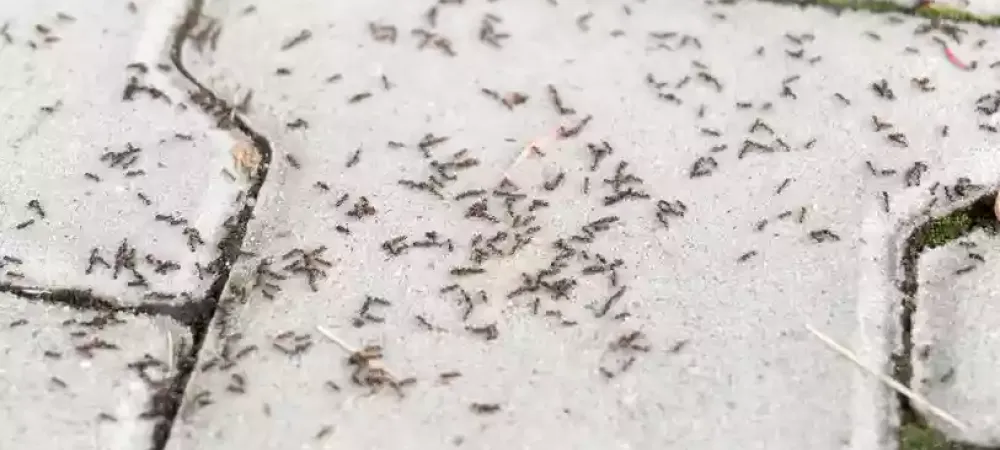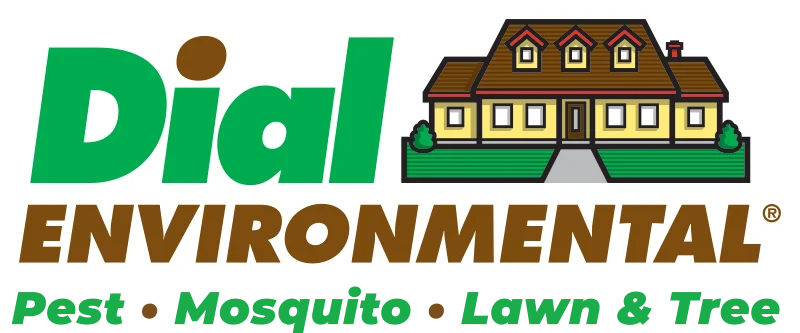Ant Droppings vs Termite Droppings: How to Tell the Difference?

Two household pests that are commonly mistaken for one another are termites and ants – particularly, carpenter ants.
Both species have an organized caste system with defined roles of workers and soldiers who protect their queen. And while these two pests can co-exist in a colony, there are differences between the two. For instance, ants excavate wood to make tunnels while termites feed on the wood.
Knowing the difference between these types of pests can help you prevent and treat them. There is one key difference that can help you with identification: droppings and “frass”
What Do Ants Look Like?
Ants like moist wood, dead wood, and trees similar to termites. Physically, worker termites and younger ants do not have wings. However, as carpenter ants reach their final stage of growth, they do develop wings much like termites. Additionally, ants are often the same size and color of termites. These elements and more make it hard to identify an ant from a termite.
When looking at an ant’s physical features, you’ll see that they have kinked (or elbowed) antennas, longer front wings than hind wings, and three distinct body regions with a defined waist.
What Do Ant Droppings Look Like?
A distinct difference between ants and termites are their droppings and “frass.”
Ants are cannibals, meaning their droppings often contain pieces and part of other ants. This, along with wood shavings, dirt, and fecal matter, makes their droppings chunkier than termites.
What Do Termites Look Like?
Termites are often distinguishable by their long, straight antennas and long, ovate bodies. They’re typically between 0.25 and 0.5 inches long and vary in colors based on the type of termite. Generally, they are shades of brown much like ants.
In addition to their straight antennas, termites also have two sets of wings that are the same length and a body that is mostly uniform in width. A termite’s wings are often twice as long as their body.
What Do Termite Droppings Look Like?
Since termites actually eat the wood rather than simply moving through it, their frass typically appears like sawdust. The color of a termite’s frass varies on how old it is when found. Colors range from beige, brown, and black.
Their droppings are small and pellet-shaped with either a beige or black appearance. A termite’s droppings and frass can be found separately, but they are often found mixed together.
How to Tell the Difference Between Ant & Termite Droppings
In addition to a few physical characteristics, one way to establish whether you’re dealing with ants or termites is to simply look at their droppings or frass.
- Ants have thicker, less processed droppings.
- Termites have finer droppings.
The frass from both species contain wood. However, because the droppings from ants contain other elements, it’s often more dangerous than termite frass or droppings. Termite droppings are strictly natural substances like wood and cellulose. Therefore, the waste is not harmful to humans and does not pose a threat of diseases.
What many people do find is that termites and their frass often cause increased allergies. This is because of the micro particles that are released into the atmosphere. This means that termite droppings can become a health risk for those who suffer with respiratory problems or asthma.
If you find what you think may be termite droppings or frass, many individuals have reported a mild musty odor like sawed wood.
How to Get Rid of Ants and Termites
When it comes to carpenter ants and termites, a good thing to know is that it’s fairly normal to see ants in your home. However, if you see termites indoors, it’s a clear sign of invasion.
If you’ve found ant or termite droppings in your home or building, it’s time to call the professionals because chances are high that you have an active infestation.
At Dial Environmental, we provide both ant control and termite control. Ants are the number one pest in New Jersey; our treatment and control measures include:
- Low grade treatment of foundations, plant beds, tree bases, wires, conduits.
- Use gels and target injection in tiny quantities to optimum nesting areas.
Only one primary termite species resides in our area: the eastern subterranean termite. However, that doesn’t stop their colonies from growing to several hundred thousand. Termites cause thousands – even millions – in damage to structures each year. Our termite treatment includes:
- Inspection by our licensed Wood Destroying Insect inspector to find entry areas
- Installation of Sentricon®Termite Colony Elimination System
- Annual monitoring and inspection of Sentricon® Stations and structure
For more information on ant control and termite control, contact our specialists.
